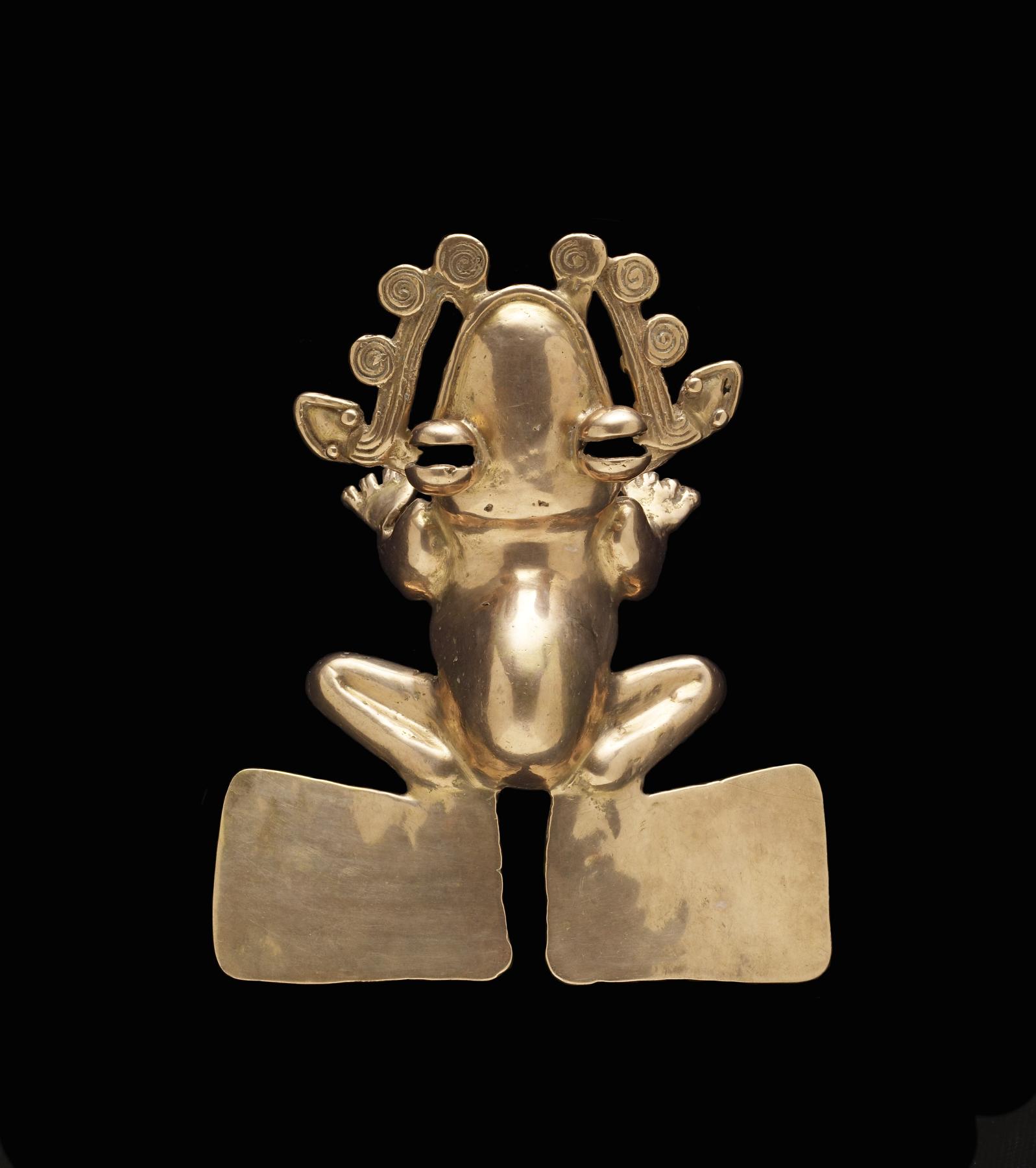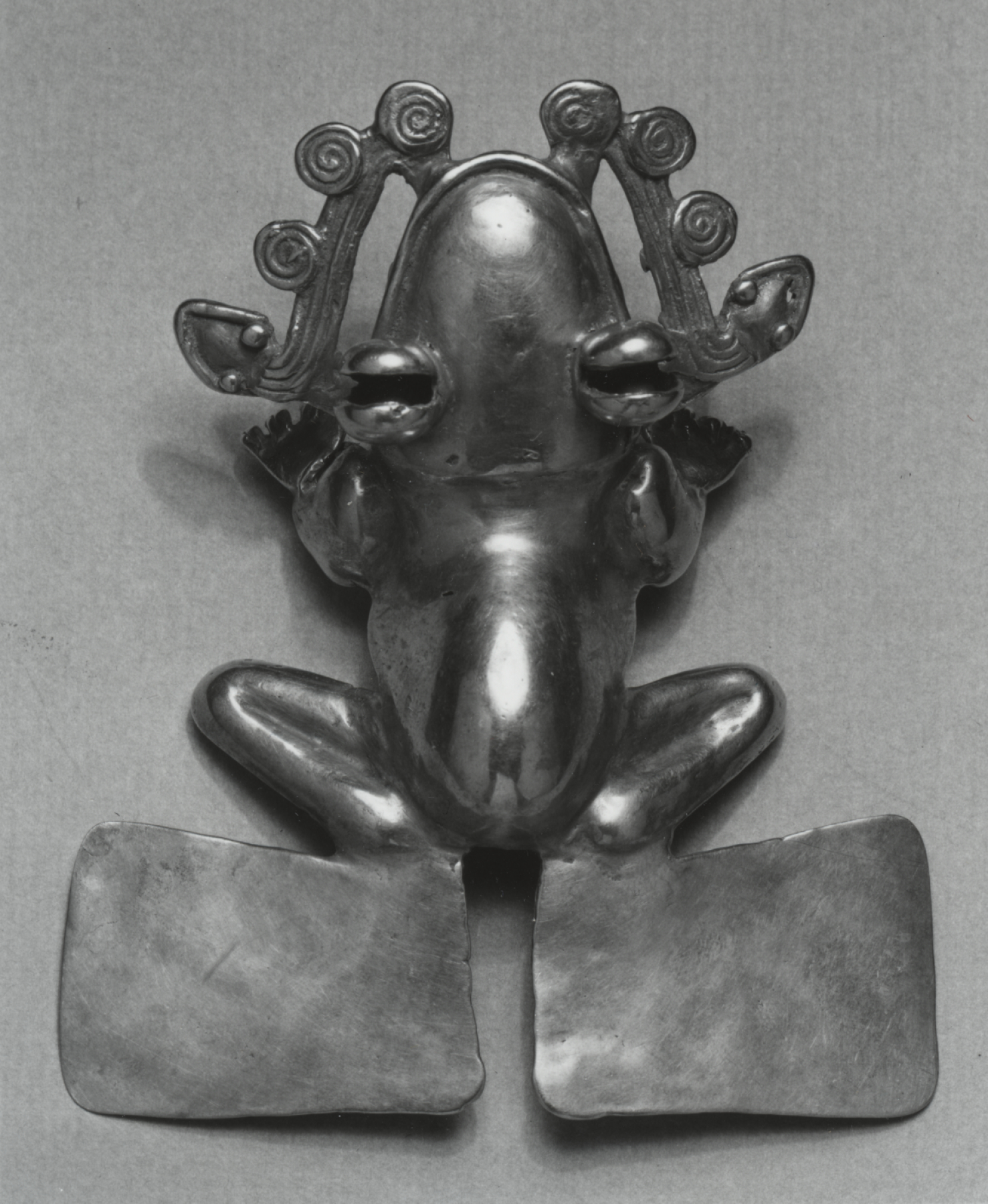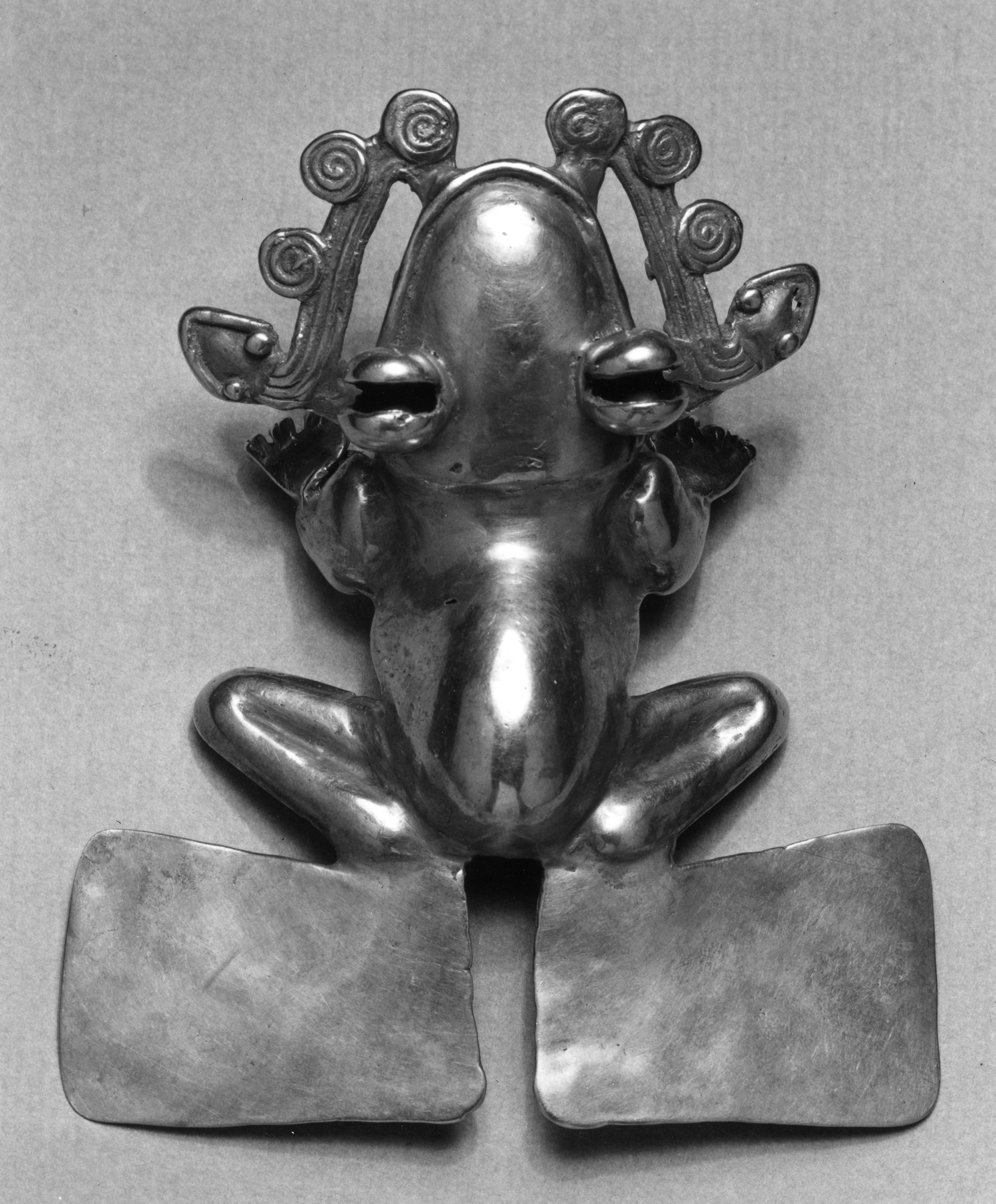Frog Pendant
(Ancient Americas )
Pendants were worn by men around the neck on ceremonial occasions. Columbus noted that the inhabitants of Panama who came to greet him wore gold pendants. This piece could have been created in Columbus's time or during the previous 600 years.
Frogs were associated with rain and fertility, and were therefore quite popular; they could also symbolize transformation. This frog pendant has bells for eyes, and holds a double-headed snake in its mouth. Its large hind feet are flat and rectangular.
Provenance
Provenance (from the French provenir, 'to come from/forth') is the chronology of the ownership, custody, or location of a historical object. Learn more about provenance at the Walters.
[Found at a graveyard between Divalá (a village on the outskirts of settled Panama, thirty miles west of David in the province of Chiriqui) and Costa Rica, Spring 1909]; Tiffany & Co. New York, 1910, by purchase [from "Indians," see December 29, 1910 correspondance from Tiffany & Co. to Henry Walters]; Henry Walters, Baltimore, 1911, by purchase; Walters Art Museum, 1931, by bequest.
Exhibitions
| 1995-1996 | Going for Baroque. The Walters Art Gallery, Baltimore. |
| 1984 | The Taste of Maryland: Art Collecting in Maryland 1800-1934. The Walters Art Gallery, Baltimore. |
| 1971-1972 | World of Wonder. The Walters Art Gallery, Baltimore. |
Conservation
| Date | Description | Narrative |
|---|---|---|
| 7/30/1979 | Examination | examined for condition |
Geographies
Panama (Veraguas-Gran Chiriquí) (Place of Origin)
Measurements
H: 1 7/8 × W: 1 3/4 × L: 4 3/4 in. (4.7 × 4.5 × 12 cm)
Credit Line
Acquired by Henry Walters, 1911
Location in Museum
Not on view
Accession Number
In libraries, galleries, museums, and archives, an accession number is a unique identifier assigned to each object in the collection.
In libraries, galleries, museums, and archives, an accession number is a unique identifier assigned to each object in the collection.
57.299






